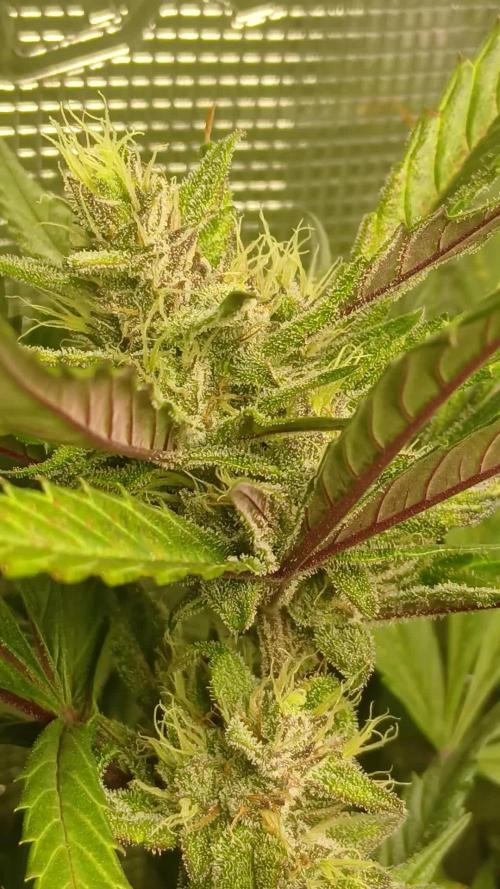The Grow Awards 2026 🏆 

































Processing
Likes
Comments
Share


@Wasoh
Follow
Compre humidificares por aliexpress a bajo costo y mejoro la humedad del indoor.
Likes
9
Share


@Sunofa420
Follow
This week I added some home made nutrient made from egg shell im also putting together a sprout mix of nutrient made from some bird seed mix to feed my plants
Likes
25
Share


@XperencdGmanXG
Follow
got these clones of wedding cake from a local grow buddy, Thought I had room for them indoors but I was wrong. So outside they go for the year. They really wanted to reach for the sky indoors lets see how they do outdoors!
Processing
Likes
8
Share


@Spgrows
Follow
New light caused massive growth!
Definitely stronger and cheaper than the last light
Likes
2
Share


@BenandLippisfinest
Follow
100% Krönungsrate wie immer bei Fastbuds bisher, wir sind wieder sehr gespannt auf die terps
Likes
12
Share


@tsf_homegrow
Follow
Mykorrhizza zum umtopfen per Augenmaß direkt auf die Wurzeln gestreut.
Likes
5
Share


@HelioCentricGrows
Follow
Well got to the end with a nice harverst. smoke is good.. rosin is better!
Likes
9
Share


@wheedtobeus420
Follow
Day 62. Realized my hose water was sitting at ph of 8.5 or higher. Which the ladies really didn’t like. Got that dialed in. Jesus this water issue with the new home has been a bitch. Glad she is bulking and looking wonderful. The smell is off the chart.
Processing
Likes
28
Share


@Bud_E_grows
Follow
Cruising right along. Baby girl is definitely devilish. Week 11 feed this week ph 6.4 runoff at 6.6 environment high of 81.9F 51%RH low 67.5F 39%RH. She’s stacking at top still shooting pistils out slowly. Taking slot of real estate in tent had to get rid of one other plant :( but this one shall prevail. Super eager for the buds. The scent she leaves on your fingers after interaction is lovely.
Likes
179
Share


@Tropicannibis_Todd
Follow
💩Holy Crap We Are Back At It And Loving It💩
Growmies we are at DAY 28 and she's just killing💀it👌
👉We are in the Preflower stretch 👈
So Shit , I gave them just a tad to much nutes on the last feeding 👈 But I have since fixed it
So I'm starting to pull her over and do some low stress training 🙃 and some defolation 😳
Lights being readjusted and chart updated .........👍rain water to be used entire growth👈
👉I used NutriNPK for nutrients for my grows and welcome anyone to give them a try .👈
👉 www.nutrinpk.com 👈
NutriNPK Cal MAG 14-0-14
NutriNPK Grow 28-14-14
NutriNPK Bloom 8-20-30
NutriNPK Bloom Booster 0-52-34
I GOT MULTIPLE DIARIES ON THE GO 😱 please check them out 😎
👉THANKS FOR TAKING THE TIME TO GO OVER MY DIARIES 👈
Likes
2
Share


@smokeycropping
Follow
- LAS PLANTAS SIGUEN CON EL MISMO PLAN NUTRICIONAL
- NO SE VEN CARENCIAS NI EXCESOS
- el hps de 600 MANTIENE MI AMBIENTE SIN MAYORES INCONVENIENTES
-NO SE VEN PLAGAS NI MAYORES PROBLEMAS
Likes
41
Share


@Ganjagrandaddy
Follow
Hi all. I hope to are all as interested as I am to see what this light can really do. I have been learning g to use l.e.d for the past 3 years and the majority of that has been using Mars Hydro lights. I originally grew for a few decades in HPS 600 watt bulbs and laughed at the new kid on the block ( l.e.d) and its fancy boxing and blurple colours and never saw a tine I could afford the kind of L.e.d that was being used by industrial and pharmaceutical grade growers worldwide. These were always way too expensive to make the conversion worth the benefits to my home growing. I started on the Mars Tsl2000 and soon had 2 , then added an sp250 followed by the very good sp3000 . Having the chance to try this new 300w beauty and its sexy framework too , was an opportunity too good to miss so here we are.It has been a lesson in training for a slight penetration difference mainly between the hps and l.e.d and keeping them in light as direct as I can. They are running at 50% for now as the ladies are just adjusting to the soil mix . The 2 Mexican airline are having a slight issue with the soils strength I think so have only just really started to settle down. I thought one was going to die of toxicity but it has kept going . The Strawberry Pie seem the most settled so far and are beginning to put their next leaf sets out but the six Shooter also has signs of disliking the initial soil mix. A few more days to settle in and a good watering cycle should sort them out better. So not much to really report this early on except we got 6 from 6 as a start lets hope it stays productive. Be well folks
Likes
4
Share


@TheSurfBud
Follow
Nice sweet smell... could say what strain it is because its from sweetseeds sweet auto mix 10 pk of the best..
Definitely going to enjoy this one ...
Grow went well and fast 62 days flat...
Likes
14
Share


@Jays_Not_Here_Man
Follow
The Runtz auto girls are doing 😊. They have settled in and are fattening and stacking nicely. They are only about 16-18 inches total, but have some nice fat buds, should be some good weight.
They are starting to develop some frost, but are very greasy to the touch 🤤 Trying to keep them in a sweet spot so they keep developing. RH around 55-58 % and Temps between 77-80 degrees. They are in week 8 now, and suggested harvest is about 70-75 days… Happy Gardening 🇨🇦👊❤️🌱
Likes
6
Share


@Trinidad
Follow
Day 65. Omg the smell is so amazing, it's hard to describe, sweet and sour at the same time. Maybe a young guava. I could smell her all day. The buds are small but frosty. These buds will make for easy trim.
Likes
13
Share


@SgtDoofy
Follow
April 2
Fully into flowering now. I think the tape that I put over the LED on the humidifier was more translucent than I expected, delaying flowering a week. I fed a half gallon of RAW BLOOM on April 1, and a full gallon 2 days prior.
I'll need to dedoliate soon, cuz the bottom is a jungle.
Likes
1
Share


@Pierrougarou21
Follow
Ne domez pas la strcture des fleurs commencent a eclater c est jolie a regarder




















